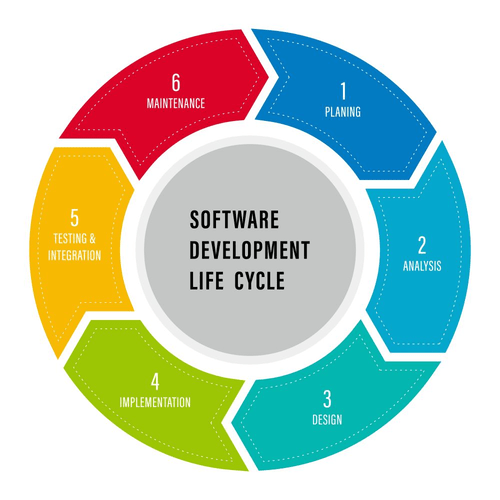Horizontal scaling is another strategy, the place the system could be scaled horizontally by including extra situations or nodes as wanted. Auto-scaling mechanisms are also configuring scaling insurance policies primarily based on metrics similar to CPU utilization, reminiscence utilization, or request charges. Tools play a important function in monitoring and predicting the demand of workflows. Kubernetes, Docker Swarm, Microsoft Azure Monitor, and AWS CloudWatch are just some of the top choices for monitoring key cloud metrics.

In other words, companies haven’t got to worry about their techniques crashing or becoming unresponsive throughout peak instances. This is essential for companies that rely on their on-line presence, similar to e-commerce and online service providers. Choosing between scalability and elasticity in cloud computing largely depends on your business’s specific wants and circumstances. Both provide unique benefits and can considerably improve your computing capabilities, however your alternative will rely upon factors like your demand patterns, development projections, and finances.
Cloud Scalability Vs Elasticity
To achieve scalability and elasticity in a cloud setting, designing functions and methods with scalability and cloud elasticity in thoughts is crucial. This entails utilizing distributed architectures, microservices, and modular design ideas to allow components to scale independently. The selection between scalability and elasticity is dependent upon your group’s wants, resources, and goals. Workload predictability is more appropriate for secure workloads, whereas elasticity allows sources to be automatically scaled in actual time in response to demand.

This level of adaptability offers appreciable financial savings not solely in direct prices. Teams additionally concentrate on innovation and core work somewhat than managing infrastructure to enhance operational efficiencies. Cloud scalability refers to the capacity of the cloud computing system to reinforce its capability to fulfill the rising calls for of its workload.
Scalability is the capacity of a system, network, or process to handle a growing amount of work or expand your eCommerce retailer’s capability to accommodate that development. It is essential in expertise, notably in software functions, databases, and systems, to deal with elevated load with out compromising performance, reliability, or responsiveness. Cloud scalability has a direct impression on a company’s capacity to keep up consistent app and system performance during various demand ranges. Systems can deal with sudden utilization spikes without degradation in service, ensuring a seamless person expertise. According to research by Gartner, cloud computing will evolve from a brand new innovation to a enterprise necessity by the year 2028 because of the cloud’s scalability and other benefits.
Elasticity Or Scalability? Picking The Right Stretch For Your Cloud
It adjusts to accommodate extra users and scales down to avoid wasting sources when wanted. The distinctions between scalability and elasticity are important to understanding the optimum utilization of resources in cloud computing. While scalability relates to a system’s ability to handle elevated hundreds by increasing its resource capacity, elasticity refers again to the capacity to adjust to workload modifications in an automated and real-time method. In cloud computing, scalability and elasticity normally go hand-in-hand to offer a robust and adaptable framework for useful resource management. While scalability includes expanding assets to fulfill growing demand, elasticity handles the fluctuations in that demand, fine-tuning useful resource allocation in real time.
Elasticity is dependent upon superior tools that routinely regulate your resource levels, which means your group needs the know-how to set up, monitor, and tweak these systems as wanted. This requires a stable understanding of the know-how and a readiness to dive into the nitty-gritty details of cloud useful resource administration. Conversely, scaling out spreads duties across a number of machines or servers, optimizing the system’s total efficiency and reliability without compromising pace or high quality of service. Diagonal Scalability –It is a mix of each Horizontal and Vertical scalability the place the sources are added each vertically and horizontally. But at the scale required for even a “smaller” enterprise-level organization to take benefit of its cloud system, the costs can add up shortly when you aren’t mindful of them. Scalability is meeting predictable visitors demand while elasticity is assembly sudden visitors demand.
Scalability Vs Elasticity: Understanding The Difference
When the visitors picks up again, elasticity scales up resources to take care of optimum efficiency. This balance between scalability and elasticity makes cloud platforms flexible and cost-effective, making certain businesses only pay for what they use. Such assets embody RAM, input/output bandwidth, CPU processing functionality, and storage capacity. In conclusion, understanding elasticity in cloud computing is crucial for building resilient, scalable, and cost-effective functions and companies. By leveraging elasticity effectively in cloud environments, organizations can optimize resource utilization, enhance performance, and respond swiftly to evolving business requirements.
This allows for the system to be flexible and responsive and to reduce waste by solely using the resources that are needed. Elasticity is the ability to fit the resources wanted to cope with masses dynamically often in relation to scale out. So that when the load increases you scale by adding more assets and when demand wanes you shrink again https://www.globalcloudteam.com/ and remove unneeded sources. Geographical distribution is essential for constant performance and availability globally, whereas scalability could require more manual coordination. Risk administration is one other consideration, with elasticity enhancing fault tolerance and disaster recovery by automatically reallocating assets in case of failures or outages.
- It basically helps you understand how well your architecture can adapt to the workload in real time.
- This can enhance both the scalability and elasticity of cloud computing methods, resulting in more environment friendly resource usage.
- However, understand that scalability may lead to assets being under-utilized in periods of low demand, which may lead to larger costs total.
- Typically, scalability is a long-term resolution finest suited for businesses with regular, linear development.
- This is what occurs when a load balancer provides situations every time a web application will get a lot of visitors.
Conducting LPA with DATAMYTE lets you successfully determine and correct potential defects before they become main high quality points. An in-depth take a look at how businesses develop cloud-native apps and the way low-code platforms might help. Find out all of the advantages of utilizing OutSystems to extend app scalability. Scalability is essentially handbook, deliberate, and predictive, while elasticity is automatic, prompt, and reactive to expected conditions and preconfigured guidelines. Both are primarily the same, except that they occur in several situations. The versatility is totally relying upon the local weather as now and again it’d turn into negative attribute the place execution of certain purposes probably ensured execution.
Elasticity is a system’s knack for adjusting its resource ranges mechanically to match the workloads it faces at any moment. This sensible adaptation ensures sources are well spent during quiet intervals and manageable throughout spikes in demand. Scalability is used to meet the static needs while elasticity is used to fulfill the dynamic need of the organization. Scalability is a similar kind of service provided by the cloud where the purchasers have to pay-per-use. So, in conclusion, we will say that Scalability is helpful the place the workload stays excessive and increases statically. But some methods (e.g. legacy software) aren’t distributed and possibly they will solely use 1 CPU core.
Industry-specific components affect the selection between scalability and elasticity in useful resource management. ● Vertical scaling — Scaling up or down vertically includes including extra sources corresponding to RAM or processing power to your existing server when you might have an elevated workload. No code alterations are required for this kind of scaling as you would possibly be solely including on further expansion units.
Cloud Elasticity & Cloud Scalability For Analytics Workloads
In cloud computing, elasticity works through the use of sophisticated algorithms and automation, which allow real-time scaling based on demand ranges. Relying heavily on predictive analytics, the system anticipates load changes and preemptively adapts obtainable sources to take care of the most optimum efficiency degree. This allows for the administration of sudden drops or spikes in usage without guide intervention for seamless operation. The “elastic” nature of a cloud environment ensures both uninterrupted services and maximum price efficiency. Elasticity in cloud computing refers back to the system’s capacity to routinely adapt to altering workloads by dynamically provisioning and de-provisioning resources in actual time.
Netflix was able to leverage the elasticity of the cloud to scale up and down, and we are in a position to spin up a number of clusters dynamically to handle completely different sorts of workloads. An elastic cloud service will let you take extra of those assets when you want them and let you launch them whenever you not need the additional capacity. On the opposite hand, when you delay shrinking, some of your servers would lie idle, which is a waste of your cloud budget. Scalability steps in to ensure that the applying can handle a major increase in user visitors, say during a promotional campaign—the infrastructure scales to accommodate the increased load.
How Scalability Is Made Simpler With Cloud Computing
Most small businesses use elasticity after they have sudden increases in demand and workload. Cloud Elasticity allows organizations to scale capacity up and down quickly, either mechanically or manually. Cloud Elasticity can discuss with the process of ‘cloudbusting’ from on-premises infrastructure to the general public cloud. Scalability necessitates manual intervention, whereas elasticity is totally automated.
Say we now have a system of 5 computers that does 5 work items, if we want one more work unit to be done we we’ll have to make use of another computer. Also, if a brand new pc is bought and the extra work unit is not needed any extra, the system get stuck with a redundant useful resource. As one other instance, you possibly can configure your system to increase the entire disk area of your backend cluster by an order of two if more difference between scalability and elasticity in cloud computing than 80% of the whole storage currently out there to it’s used. If for no matter cause, at a later level, information is deleted from the storage and, say, the total used storage goes below 20%, you’ll have the ability to lower the total available disk house to its original worth. Scalability is fairly simple to define, which is why a few of the aspects of elasticity are often attributed to it.
Scalability and elasticity are two terms which are regularly heard in the hallways of any tech company in the fast-paced world of cloud computing. These are the 2 cornerstones which have the power to create or break the efficiency and affordability of a cloud-based system; they are more than just catchphrases. By following a quantity of greatest practices for dealing with cloud scalability and elasticity, corporations set themselves up for long-term success.